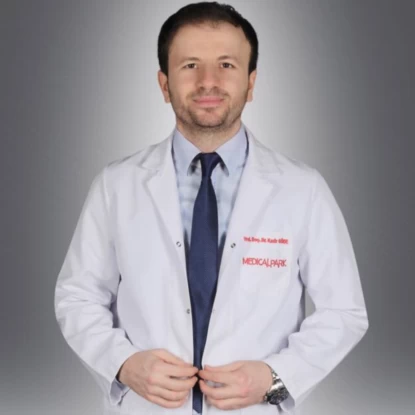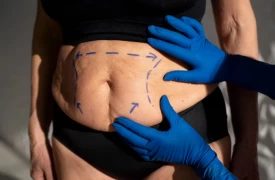
VSF (Vascular Stromal Fraction) and Abdominal Fat Stem Cell Therapy
- VSF (Vascular Stromal Fraction) and Abdominal Fat Stem Cell Therapy
- What is VSF (Vascular Stromal Fraction)?
- What are the Applications of VSF (Vascular Stromal Fraction)?
- What is Abdominal Fat Stem Cell Therapy?
- Potential Applications of VSF and Abdominal Fat Stem Cell Therapy:
- Conclusion:
VSF (Vascular Stromal Fraction) and Abdominal Fat Stem Cell Therapy are innovative treatment methods that have gained significant interest in the field of medicine in recent years. These treatments involve the use of stem cells derived from adipose tissue (fat tissue). In this article, we will provide a scientific evaluation of VSF and Abdominal Fat Stem Cell Therapy and discuss their potential applications in the field of physical therapy and rehabilitation.
What is VSF (Vascular Stromal Fraction)?
VSF is a cell population derived from adipose tissue, consisting of stem cells, perivascular cells, and other cell types that promote tissue repair. VSF is considered a stem cell-based treatment method. Fat tissue samples are obtained from the body and stem cells are isolated in a laboratory setting. These stem cells can then be used for various medical purposes.
What are the Applications of VSF (Vascular Stromal Fraction)?
VSF (Vascular Stromal Fraction), as a cell population derived from adipose tissue, includes stem cells, perivascular cells, and other cell types. The applications of VSF cover various medical conditions. Here are some potential applications of VSF:
- Orthopedic Conditions: VSF can be used in the treatment of orthopedic conditions. In particular, conditions such as joint injuries, cartilage damage, meniscus tears, and ligament injuries may respond to VSF therapy. VSF supports tissue repair and can promote healing and reduce pain.
- Rheumatological Conditions: Rheumatological conditions involve conditions that affect the joints and musculoskeletal system. Conditions like osteoarthritis, rheumatoid arthritis, and ankylosing spondylitis can be responsive to VSF therapy. VSF may reduce inflammation, increase joint mobility, and improve the quality of life for patients.
- Wound Healing: VSF can also be used in the process of wound healing. Conditions such as burn wounds, pressure ulcers, diabetic ulcers, and post-surgical wounds can be supported by VSF therapy. The regenerative properties of VSF can accelerate tissue healing and promote wound closure.
- Aesthetic Procedures: VSF can be utilized in aesthetic applications as well. Particularly in facial and neck rejuvenation procedures, the use of VSF is common. VSF injections can reduce wrinkles, improve skin elasticity, and provide rejuvenating effects.
- Neurological Conditions: There are also studies on the potential of VSF in the treatment of neurological conditions. For example, conditions like Parkinson's disease, multiple sclerosis, and spinal cord injuries may respond to VSF therapy. VSF is believed to promote the regeneration of nerve cells.
In addition to these applications, the potential uses of VSF are still actively being researched. New studies and clinical trials may expand the utilization of VSF and lead to new discoveries that can enhance its effectiveness in treating a wider range of medical conditions. However, in every case, further research and clinical studies are required to assess the efficacy and safety of VSF therapy. It is important to evaluate treatment options and consult with a healthcare professional for each individual patient.
What is Abdominal Fat Stem Cell Therapy?
Abdominal Fat Stem Cell Therapy is a specific application of VSF. In this therapy, adipose tissue is sampled and stem cells are isolated. These stem cells are then reintroduced into the patient's body for the treatment of various medical conditions. Abdominal fat stem cell therapy is commonly applied as a supportive method in the treatment of orthopedic and rheumatological conditions.
Potential Applications of VSF and Abdominal Fat Stem Cell Therapy:
VSF and Abdominal Fat Stem Cell Therapy have the potential to be used in the treatment of various medical conditions. Here are some examples:
- Joint Injuries: VSF and Abdominal Fat Stem Cell Therapy can show promising results in the treatment of joint injuries. For instance, conditions such as meniscus tears, ligament injuries, and cartilage damage can be supported by stem cell therapy. Stem cell therapy can promote the healing of injured tissue, reduce pain, and restore function.
- Osteoarthritis: Osteoarthritis is a common joint disease characterized by the degradation of joint cartilage. VSF and Abdominal Fat Stem Cell Therapy can help alleviate the symptoms of osteoarthritis. Injecting stem cells into the joint can reduce inflammation, promote cartilage regeneration, and improve joint mobility.
- Tendon Strains: Tendon strains are common issues among athletes and active individuals. VSF and Abdominal Fat Stem Cell Therapy can accelerate the healing process of tendon strains. Stem cells can stimulate tendon tissue regeneration and optimize the recovery process.
- Muscle Injuries: Muscle injuries can occur as a result of sports activities or traumatic events. VSF and Abdominal Fat Stem Cell Therapy can support the repair of muscle injuries. Stem cells can stimulate the formation of new muscle fibers and aid in the healing of damaged muscle tissue.
- Chronic Pain Syndromes: Chronic pain syndromes encompass a range of medical conditions that negatively impact the quality of life. VSF and Abdominal Fat Stem Cell Therapy can be an alternative option for the treatment of chronic pain syndromes. The anti-inflammatory and regenerative properties of stem cells can reduce pain and promote tissue healing.
Conclusion:
VSF (Vascular Stromal Fraction) and Abdominal Fat Stem Cell Therapy are promising treatment methods in the field of physical therapy and rehabilitation. These treatments have the potential to provide support in the treatment of various medical conditions. However, further research is needed to establish the efficacy and safety of these therapies. It is important to evaluate treatment options for each patient and consult with a healthcare professional.


